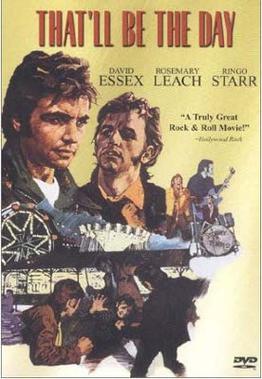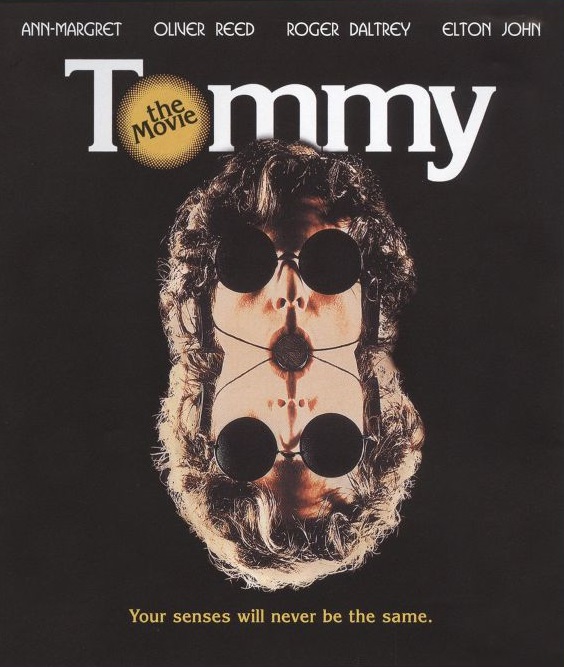Seeing your favourite artist or band on film is these days simply a matter of logging into YouTube or something similar and typing your choice into the search bar, but it wasn’t always so. Time was, one was compelled to wait patiently in eager anticipation of their next appearance on Top Of The Pops. Unless, of course, your pop act of preference had made a film, in which case it was off to the local cinema – to the seat with the clearest view and hooked to the silver screen, as it were.
The theme-line wasn’t always the same, but a recurrent thread was the use of artists and bands in narrative roles. The outcome inevitably was that even when the familiar star was cast in the role of another, it was difficult for us to look beyond the musical celebrity that we had gone along to see.
Which didn’t matter much. It wasn’t Shakespearean art after all, just a rare opportunity for us to see our musical idols in an unusual and different role, and in a different environment to that in which we were accustomed to seeing them.
Here is a list of some of the biggest pop movies of that unique and wonderful decade:
1. Elvis On Tour

The King of Rock made a lot of films – some of them memorable, some less so – but this one, released in November 1972, was to be his last.
A musical documentary, it followed him as he embarks upon a 15-city tour of the United States, bringing together some valuable footage of that momentous series of events. However it did also include such disparate features as a 1956 appearance on a television variety show, interviews with fans as well as with the man himself, and pre-tour rehearsals.
2. Born to Boogie

This one was a concert film, released in December 1972. It was directed by Ringo Starr and featured T. Rex, Elton John and Starr himself. As well as extensive concert footage from the Wembley Empire Pool it included recording studio scenes and also some rather striking vignettes such as a quaint clip filmed at John Lennon’s estate. This film was a must for glam rock fans wanting to see some of their idols performing together to a real live audience.
3. That’ll Be The Day

Ringo Starr again, albeit this time only with an acting part. When this was released in April 1973 David Essex was an emerging star on the UK music scene, and his rise to pop fame coincided (or not, as the case may be) with his appearance in not one but two cult movies which every with-it teenager wanted to watch (my mum took me to the second one, although I told all my mates at school that I’d gone with an imaginary girlfriend).
Set around the turn of the 1960s, Essex plays dead-end-jobber Jim MacLaine who gets by with a little help from his more worldly pal Mike (Starr) before having his head turned by the allure of being a rock’n’roll star. Keith Moon and Billy Fury also feature.
4. Stardust

The sequel to That’ll Be The Day sees Jim MacLaine fast forward a decade to the beginning of the 1970s, and this time Essex is leading his band The Stray Cats to superstardom. With Adam Faith now playing Mike, who is his manager, the film tracks his rise to the top and his inevitable descent into drug-ridden wreck overwhelmed by his own success and ego.
Marty Wilde, Keith Moon, Dave Edmunds and Paul Nicholas are all included in the cast, as well as Larry Hagman of Dallas fame.
5. Slade in Flame

The clue is in the name, and whilst the story is about an imaginary band called Flame staffed by imaginary band members Stoker, Paul, Barry and Charlie they look, sound, and play very much like Slade, one of the very biggest and most popular of the 1970s glam rock outfits.
Released in January 1975, the film charts the rise and fall of a talented rock outfit against a background of contractual sharp practice, back room politics and more than a touch of menace. As a project it was, in Slade’s own words, “a sort of behind-the-scenes, nitty-gritty look at the rock’n’roll business”.
6. Tommy

Also launched in 1975, this uncompromising musical (or “rock opera” if you prefer) was the film version of the album of the same name which had been released six years earlier. Boasting an obscenely impressive cast of talent from both the acting and the music worlds, it features the music of The Who from start to finish without cessation as it charts the upbringing of a boy rendered deaf, dumb and blind by the horror of seeing his father murdered by his mother’s lover (the late and devilishly talented hell-raiser Oliver Reed).
In a story so oft-told that it is well-known even to those who have never seen it, Tommy (Roger Daltrey) defies his disability to become the greatest pinball player in the world, in the process defeating Elton John who stands enormous and terrifying in the biggest pair of boots ever worn. But it all goes horribly wrong…
7. The Man Who Fell To Earth

Okay, this 1976 film should not be on this list as its only connection to music is that it stars David Bowie who, despite it being his film début, completely owns it from start to finish to the point where one could quite easily deduce that it was written for the sole purpose of placing yet another of his talents into the shop window of the world.
However, precisely because Bowie’s stamp looms so large over it I have included it as one of the cult rock films of the ’70s. The story is of an extraterrestrial (played by Bowie, natch) who crash lands on Earth whilst scouring the universe for water to ship back to this drought-wracked planet. Whilst here he partakes in earthly pastimes with varying degrees of enthusiasm but is also subjected to inhuman experiments by the natives as they attempt to understand who he is and what his purpose is among the natives.
Bowie’s character, Thomas Jerome Newton, could quite easily pass for the Thin White Duke, or vice versa, blurring eerily the distinction between Bowie and the characters he plays not only on stage, but now also on the set.
8. The Kids Are Alright

This is a straightforward yet all the same compelling “rockumentary” about perennial supergroup The Who. Although released in May 1979 (for the Cannes Film Festival – it went on general release a month later) it gathers together live performances, interviews and promotional films from almost a decade and a half, between 1964 and 1978.
By the time it was released the band, and the world, had sadly lost the legendary drummer Keith Moon, and when it was promoted with some live performances he had been replaced by Kenney Jones, formerly of The Faces.

If you enjoyed reading this article, make sure you stay updated with all Phil’s latest blog posts by signing up to receive his free Newsletter. You can unsubscribe at any time and your details will never be shared with any third party. Click here to sign up today.